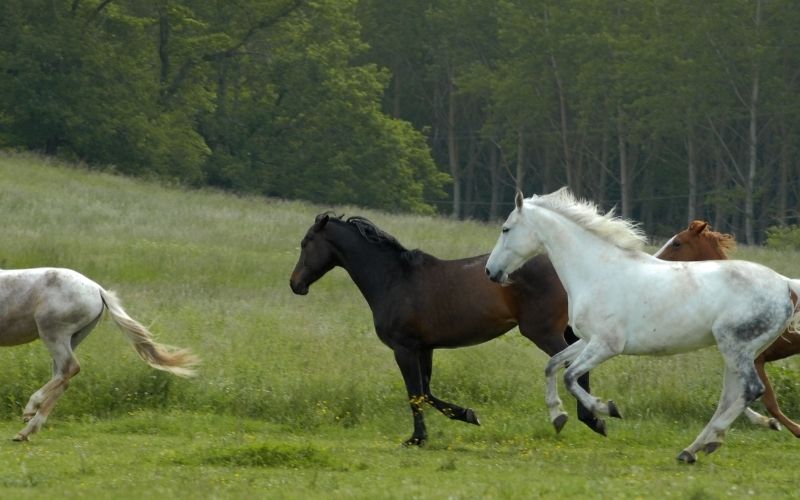
When it comes to the animal kingdom, speed is an important characteristic for survival. Whether it be for hunting or fleeing, being able to move quickly is essential to living and eating. The speed of animals is measured in two ways; body length per second, and the metric we are using for this list, customary units of speed in miles and kilometers per hour.
Here you will find a compiled list of the fastest land animals on planet earth. You might be surprised at the number of animals you may have never even heard of. These 11 land animals vary from cats, to marsupials, and even deer.
The 11 Fastest Land Animals on Earth Ranked
11. Kangaroo
Top Speed: 44 mph (71 km/h)
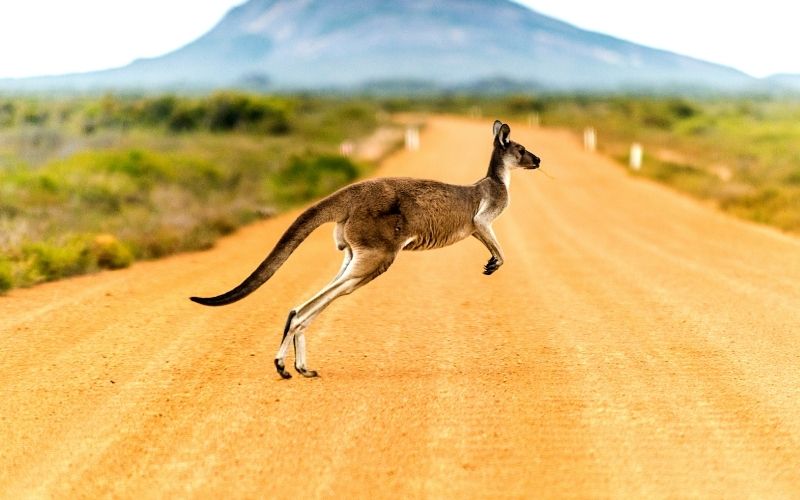
The Kangaroo’s Speed
The typical hopping speed for a kangaroo is about 13–16 mph (21–26 km/h), but over short distances, it can reach speeds of up to 44 mph (71 km/h). The Kangaroo can maintain a speed of 25 mph (40 km/h) for a mile.
Kangaroo Facts
The kangaroo is a marsupial. The largest species is the red kangaroo. There are four species of kangaroo including the Red, Eastern Grey, Western Grey, and Antilopine. They are indigenous to New Guinea and Australia. Kangaroos have large, powerful hind legs, large feet for leaping, a long muscular tail for balance, and a small head. They are herbivores, mostly eating grasses and other plants. They can also be found in other parts of the world, including parts of the United States.
10. African Wild Dog
Top Speed: 44 mph (71 km/h)
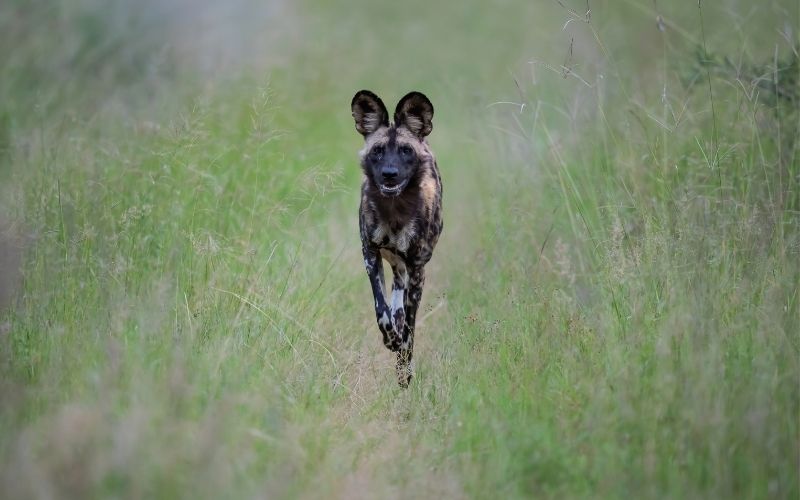
The African Wild Dog’s Speed
African wild dogs can sprint at 41 mph (66 km/h) in bursts when they are hunting. They can maintain speeds of 35–37 mph (56–60 km/h) for three miles. They’re excellent hunters and their prey rarely escape.
African Wild Dog Facts
The African wild dog is the largest canine in Africa. They specialize in hunting antelopes by chasing them to exhaustion. The African wild dog regurgitates food for its young. It also extends this action to adults, as part of the pack’s social life. These highly social animals live in packs of 10 to 30 individuals. Their coat is mottled yellow, black and white, and they have large, rounded ears. African Wild Dogs are endangered, with fewer than 6,600 adults left in the wild, due to habitat loss, poaching and disease. Conservation efforts are ongoing, such as habitat protection, anti-poaching efforts, and captive breeding programs.
9. Jack Rabbit
Top Speed: 45 mph (72 km/h)
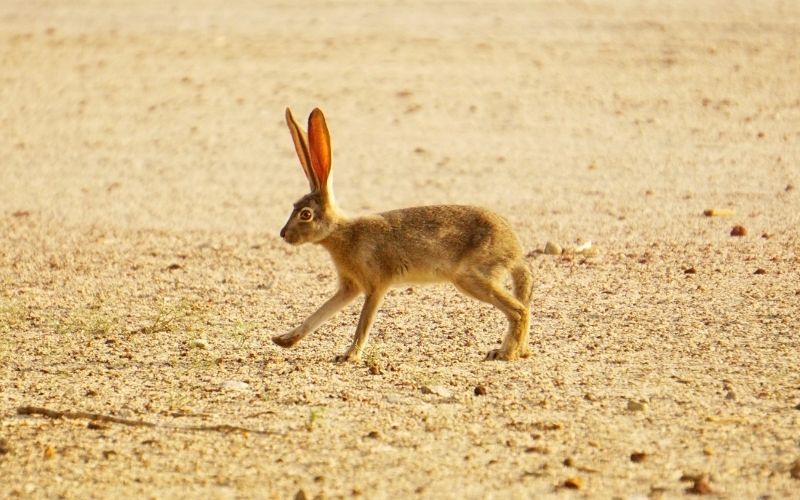
The Jack Rabbit’s Speed
The jackrabbit can reach speeds of up to 45 mph (72 km/h). Jackrabbits use a combination of leaps and zig-zags to outrun predators and remain safe in the wild. They can jump 9.8 ft (3 m) in one hop with some even reaching up to 20 ft (6 m).
Jack Rabbit Facts
The jackrabbit is the common hare of Mexico and the western US. The jackrabbit’s strong hind legs allow it to leap with great length and speed. Jack rabbits are the largest species of hares found in North America. They are brownish-gray in color, with large ears and long hind legs. They are typically found in grasslands, deserts, and sagebrush areas, where they feed on grasses, herbs, and other vegetation. Jack rabbits are important prey species for many predators, such as coyotes, foxes, and hawks.
8. Hare
Top Speed: 50 mph (80 km/h)
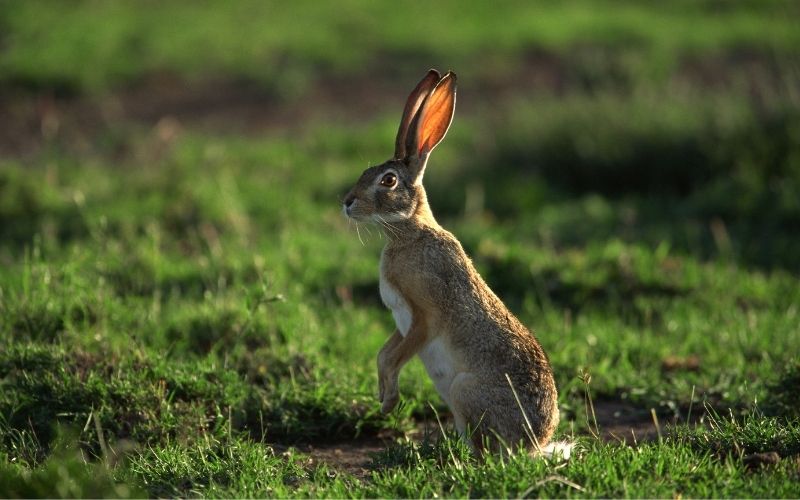
The Hare’s Speed
Hares can reach the maximum top speed of 50 mph (80 km/h) for about 20 meters. They reach 35 mph (56 km/h) for about 90 meters of distance. Hares have long powerful legs and are great runners. They are also known for their jumping ability.
Hare Facts
Hares are native to Africa, Eurasia and North America. The most common type of hare is the European hare, and other popular types include the snowshoe hare, white-tailed jackrabbit, and the Arctic hare. They can be found in a variety of habitats such as meadows, forests, and mountains. Hares generally have brown, gray, and white fur. They are also herbivores and feed on grass, herbs, and other vegetation. They differ from rabbits in that they live in simple nests above ground, typically not in groups. A newborn hare can quickly fend for itself after birth.
Read More Fun Facts
Learn more fun facts with Trivia Mastermind content.
7. Thomson’s Gazelle
Top Speed: 50 mph (80 km/h)
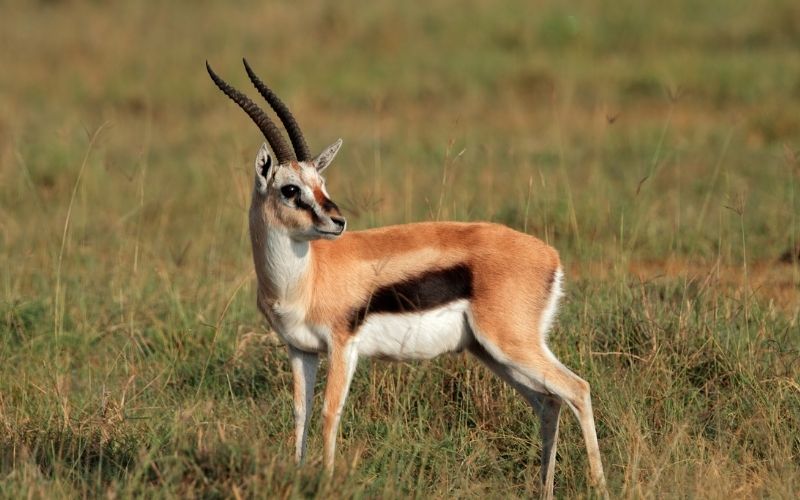
The Thomson’s Gazelle Speed
Thomson’s gazelle is one of the most well known gazelles. They can reach speeds of 50–55 mph (80–90 km/h). Their speed is partially due to their bounding leaps. Thomson’s gazelles can escape cheetahs through sheer endurance by running long distances. They will run and evade until a tired predator gives up. They are also good swimmers, and will often cross rivers and streams to escape predators.
Thomson Gazelle Facts
Thomson’s gazelles are a species of antelope that can be found in large numbers in East Africa and the Arabian Peninsula. They are smaller than other antelopes, with a slender and graceful body. These gazelles are mainly found in open savannas, grasslands, and semi-arid areas, and are able to survive in areas with limited water and food. They are prey for many predators, including cheetahs, lions, and hyenas. This species is named after explorer Joseph Thomson.
6. Blackbuck
Top Speed: 50 mph (80 km/h)
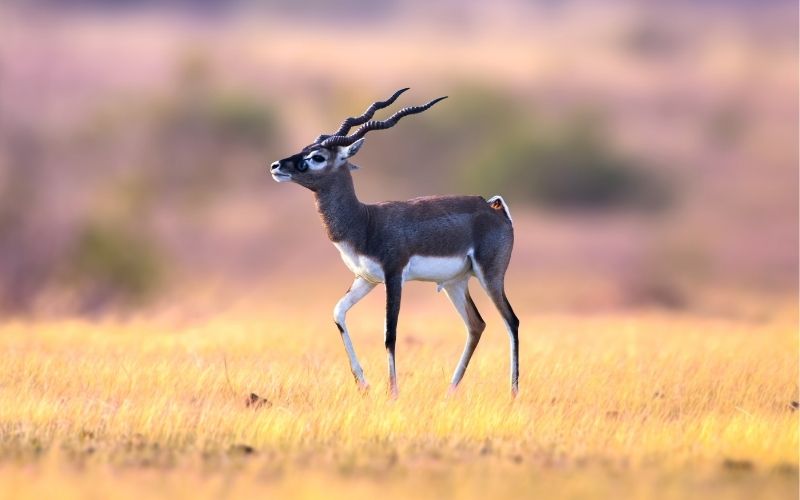
The Blackbuck’s Speed
The blackbuck antelope can reach and sustain speeds of 50 mph (80 km/h) for up to a mile at a time. Each of its strides is about 20 ft (6m). They are known for their remarkable jumping ability, capable of leaping up to 3 meters in a single bound.
Blackbuck Facts
These antelopes are native to Nepal and India. They are the only surviving member of the genus Antilope and are now the sole extant species of the family Bovidae. These animals have a slender and long neck, and long, ringed, lyre-shaped horns. They inhabit forests with water sources and grassy plains, feeding on grasses and other vegetation. These antelopes live in herds of varying sizes in distinct groups broken up by males and females of 10-20 individuals. The wolf is its predominant predator and the blackbuck antelope uses its speed to escape attacks. Unfortunately, Blackbucks are now in danger of extinction due to habitat loss and poaching.
5. Lion
Top Speed: 50.0 mph (80.5 km/h)
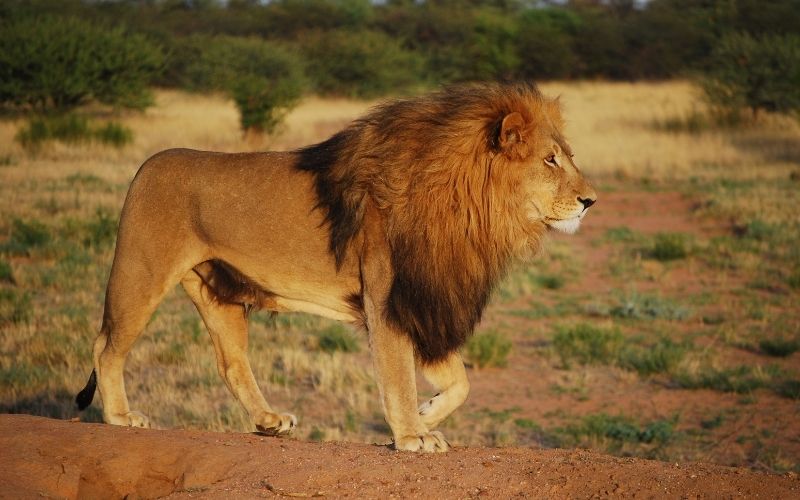
The Lion’s Speed
The lion is the second fastest wild cat in nature. It has a top speed of 50.0 mph (80.5 km/h) for short running periods. Since Lions are so big, their attack is exhausting, hence why Lion’s sneak up on their prey first.
Lion Facts
Lions are the largest of the felines and are found in Africa and India. They are characterized by their majestic manes, hunting prowess and social nature. Lions usually live and hunt in prides, with one to four males and several females. They feed mainly on large prey, such as wildebeest, zebras and buffaloes. Lions are apex predators, meaning they have no natural predators, and are often considered to be the king of the jungle.
4. Wildebeest
Top Speed: 50.0 mph (80.5 km/h)
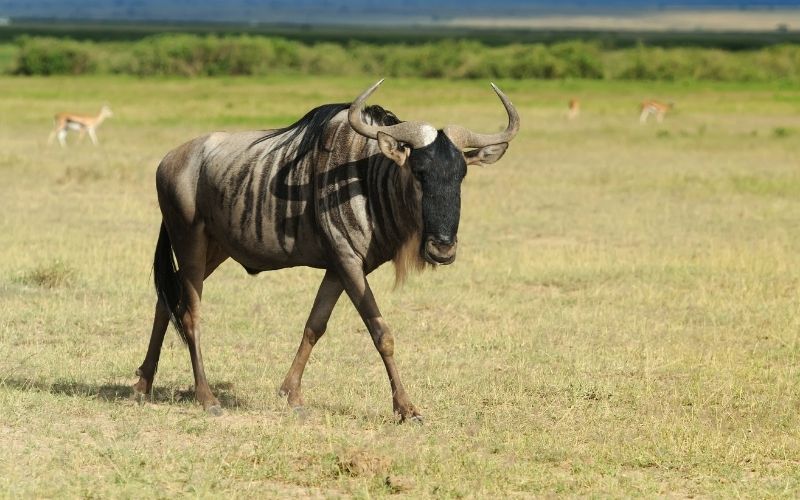
The Wildebeest’s Speed
The wildebeest are excellent endurance runners, but still have a high top speed, running up to 50.0 mph (80.5 km/h). There are two species of wildebeest, the blue and the black wildebeest. Both are extremely fast runners, which helps them escape predator attacks. Their speed gives them a better chance of escaping from predators such as the lion, African wild dog, or the crocodile.
Wildebeest Facts
Wildebeests, also known as gnus, are antelopes found in East and Southern Africa. These antelopes have a distinct, horse-like appearance, with a long mane, big horns, and a thin, curved neck. Wildebeests are herbivores, and feed on grasses, herbs, and other plants. They are incredibly strong and agile, and are known for their seasonal migrations. Wildebeests often graze and travel in massive herds of thousands of animals for extra awareness of predators, and searching for better feeding grounds. They are also an important prey species, hunted by large predators such as lions, cheetahs, and hyenas.
Play Trivia!
Challenge yourself and play trivia questions with answers and explanations.
3. Springbok
Top Speed: 55 mph (88 km/h)
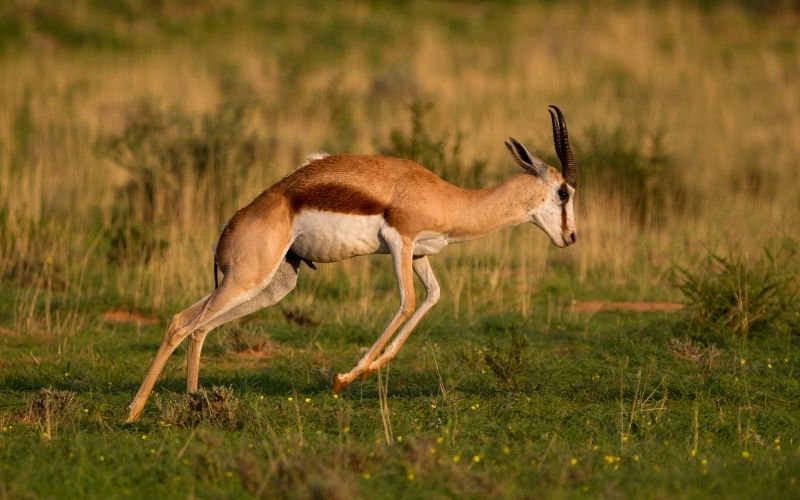
The Springbok’s Speed
The springbok is an antelope of the gazelle tribe. They are very fast, running up to 55mph (88km/h). They can make long jumps and sharp turns while running in order to evade predator attacks. A feature of the springbok is pronking, where the springbok will perform multiple jumps in the air, up to 6.6 ft (2 m) above the ground, in a stiff-legged posture.
Springbok Facts
The Springbok is the national animal of South Africa and is a species of antelope that is found in the country’s more arid regions. This large mammal has a grey-brown coat, with a white underbelly. It stands up to three feet tall at the shoulder. Its diet consists of vegetation such as grasses and other plants. Unlike pronghorns, springboks are poor long-distance runners. The springbok’s major predators are the lion, wild dog, hyenas, and cheetahs.
2. Pronghorn
Top Speed: 55.0 mph (88.5 km/h)
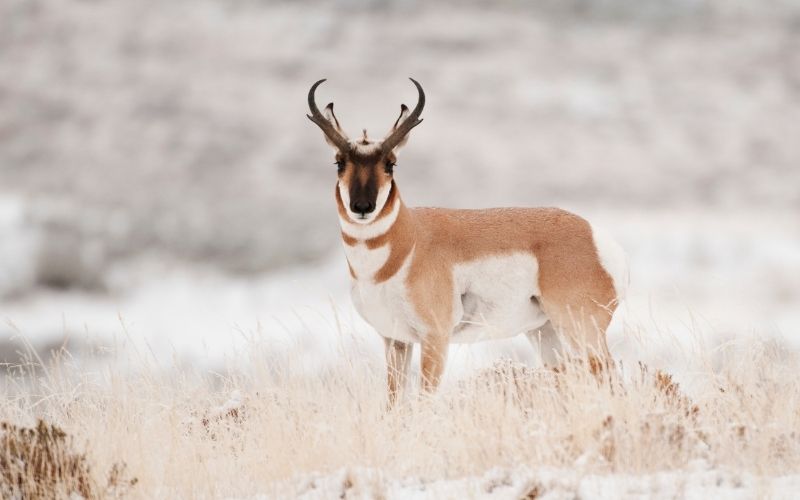
The Pronghorn’s Speed
The pronghorn is the fastest long distance animal, running at a speed of 55 mph for 0.5 mile (88.5 km/h for 0.8 km). It is the fastest land mammal in the Western Hemisphere. Its body is built for predator evasion.
Pronghorn Facts
Pronghorns are a species of antelope that are native to the grasslands of western North America. Their long horns and white fur make them a distinctive sight in the wild. They are herbivores, preferring to feed on sagebrush and grasses, and are active mostly during the day. They form small herds of up to 15 individuals and are most active during the cooler parts of the day. While it is considered the second fastest land animal, it can run for sustained speeds longer than the fastest land animal in the world. The pronghorn is built for speed. They are the only surviving species of their family.
1. Cheetah
Top Speed: 80.0 mph (128 km/h)
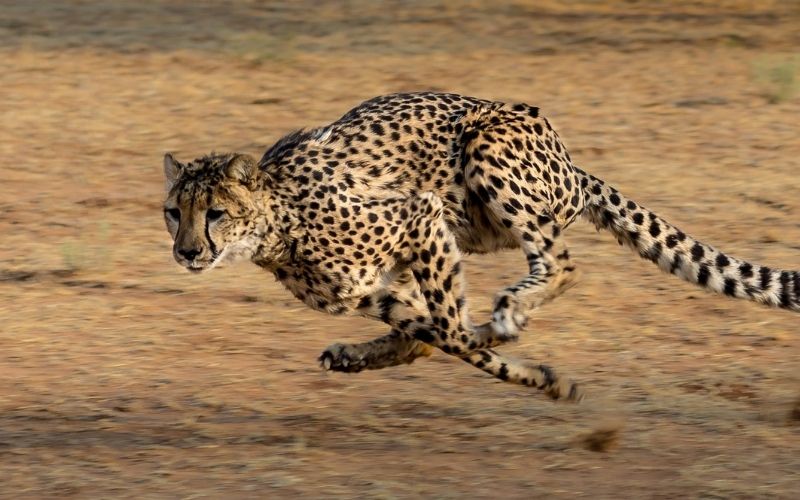
The Cheetah’s Speed
The cheetah can accelerate from 0 to 60.0 mph (0 to 96.6 km/h) in under three seconds. They are can reach speeds of up to 80 mph (128.748 km/h) and are the fastest land animals on earth. Most cheetahs run for 60 seconds at a time due to a limited endurance. Cheetahs run so fast they spend more time in the air than on the ground.
Cheetah Facts
Cheetahs are native to Africa and parts of the Middle East. Their bodies are a long build, with long legs, built for speed. They are most recognizable for their spotted fur and slender bodies. Cheetahs live in social groups, with males establishing territories, and females living a more nomadic lives. They are endangered due to loss of habitat, poaching, and competition with other predators. Conservation efforts are in place to help protect these majestic animals.
Conclusion
This post has covered the speeds of the fastest 11 land animals on planet earth. From the Kangaroo to the Cheetah, all of these animals have unique features that make them well adapted to their environment. Each of these animals have physical attributes that are built for speed. From the Kangaroo to the Cheetah, these animals can reach superior levels of speeds on land, some to be the predator, and some to avoid being the prey. Every animal on this list has their own unique set of features, and these attributes enable them to survive and thrive in their environments.
Read More Fun Facts
Learn more fun facts with Trivia Mastermind content.
Play Trivia!
Challenge yourself and play trivia questions with answers and explanations.


